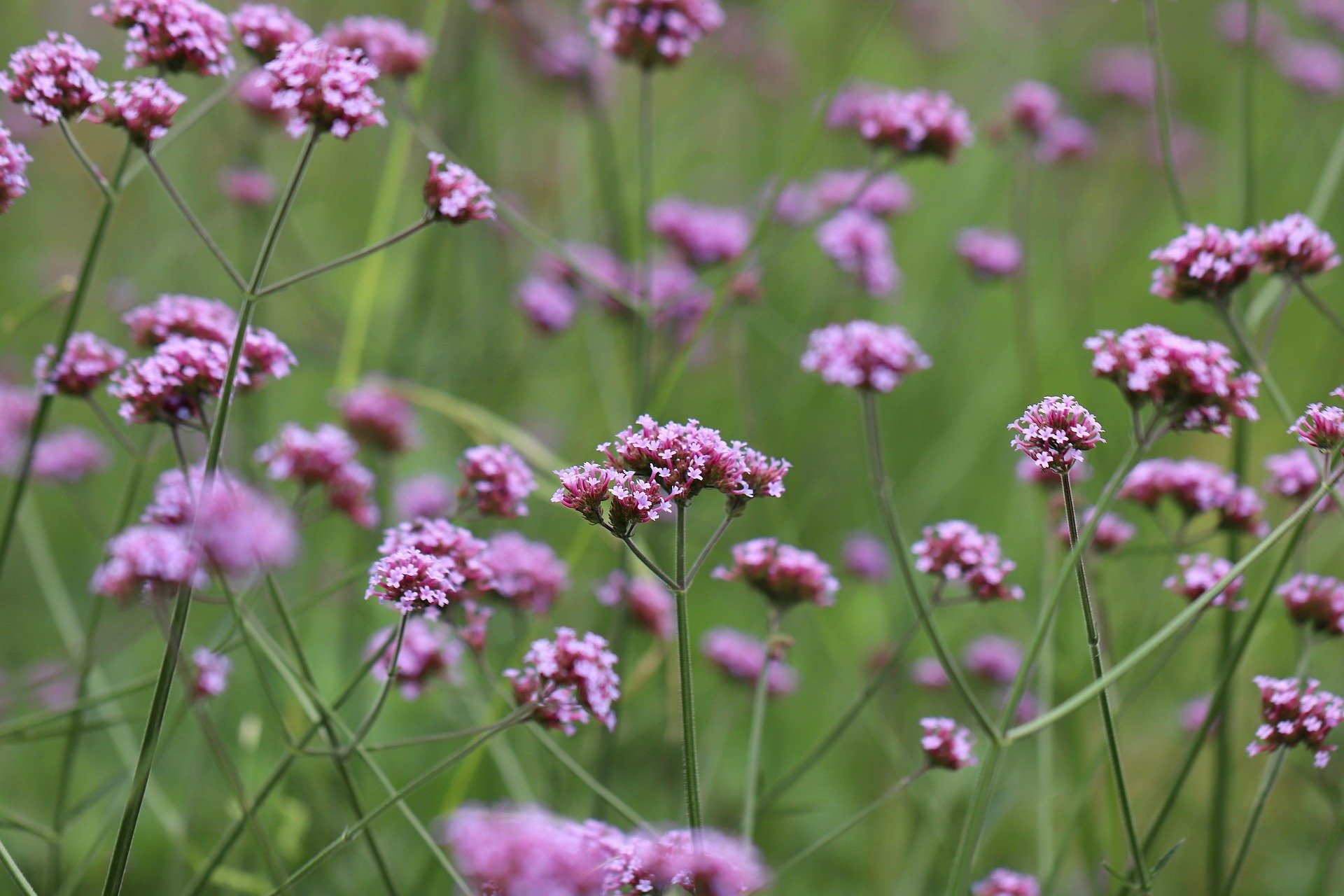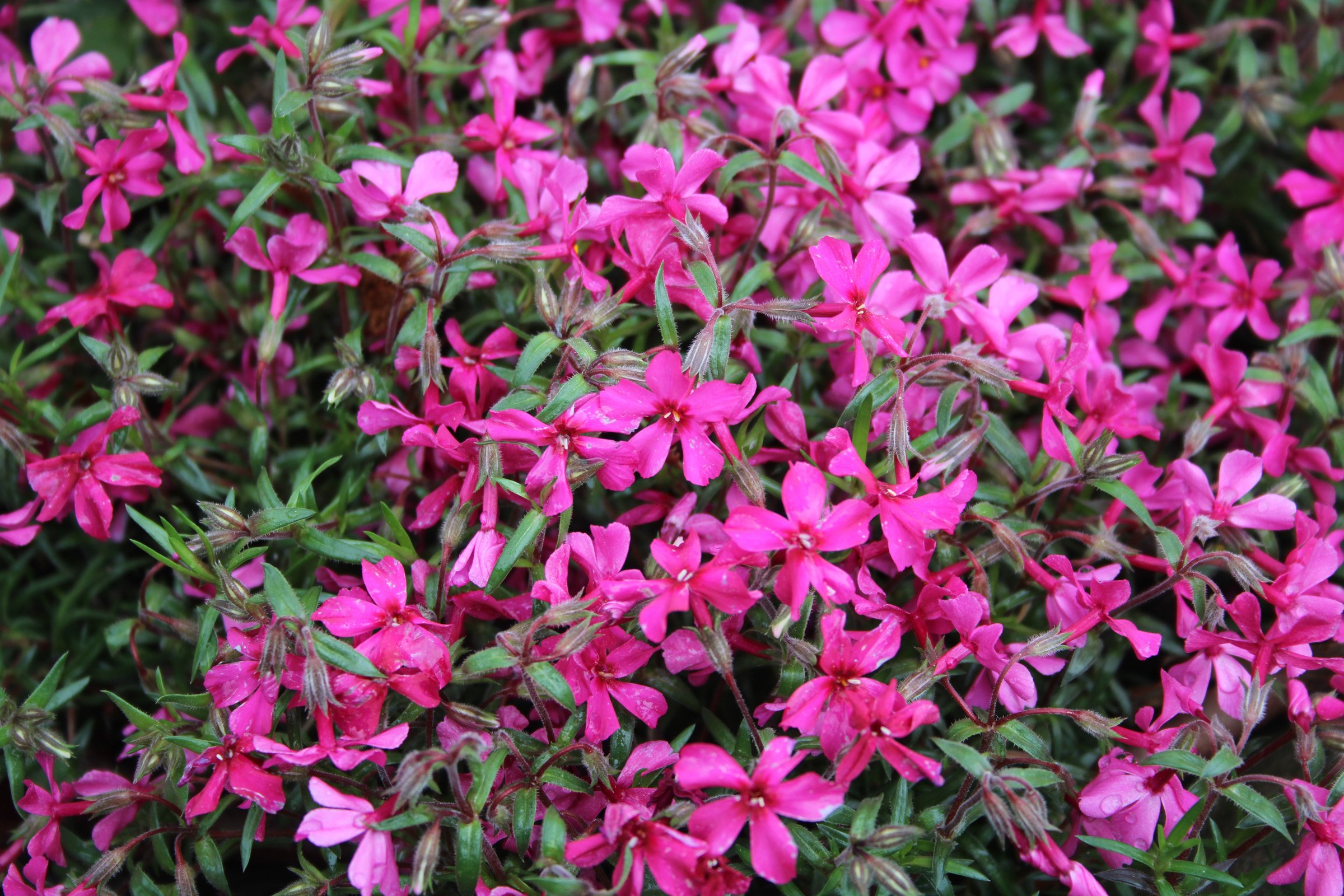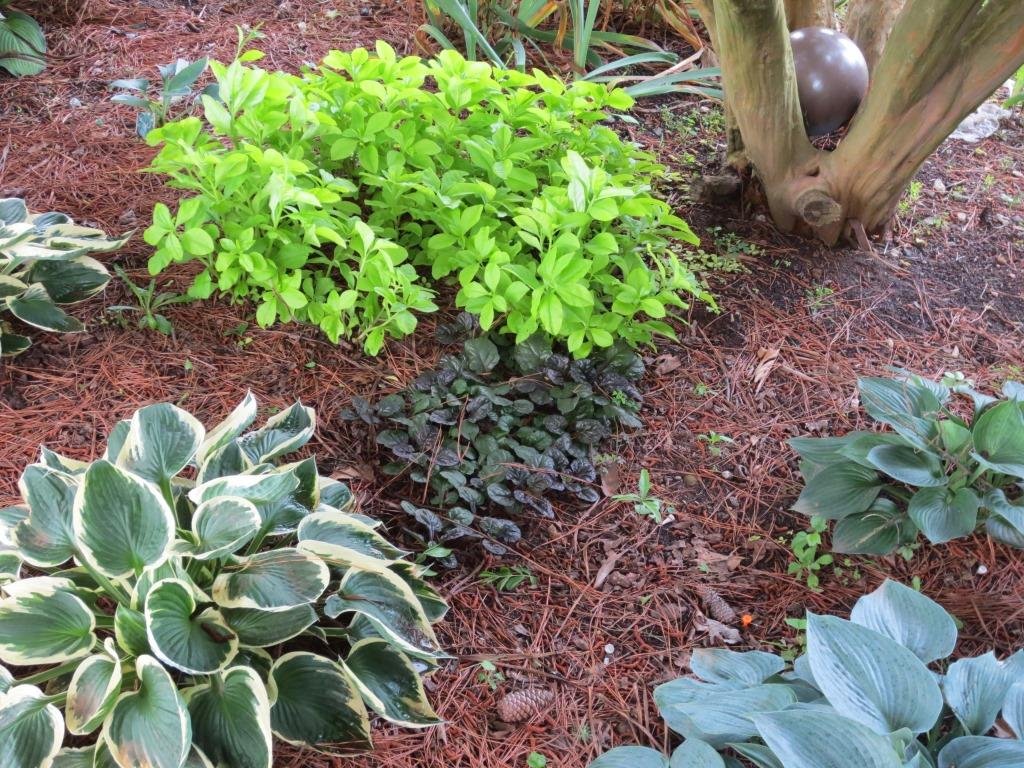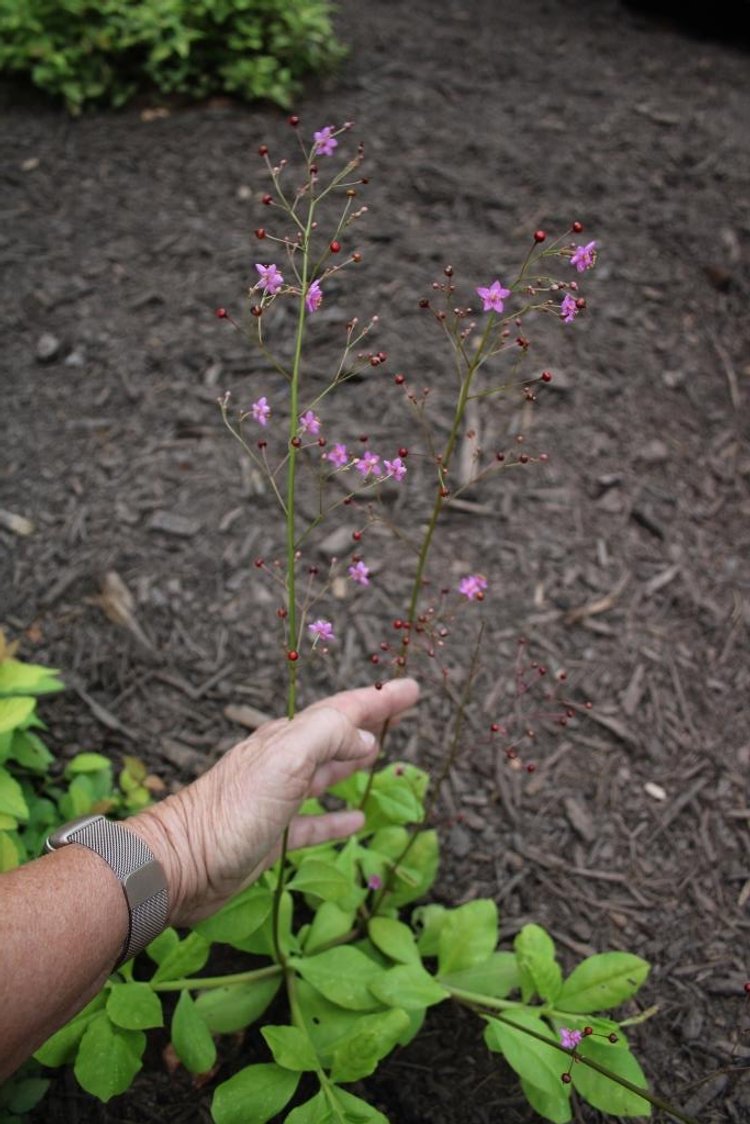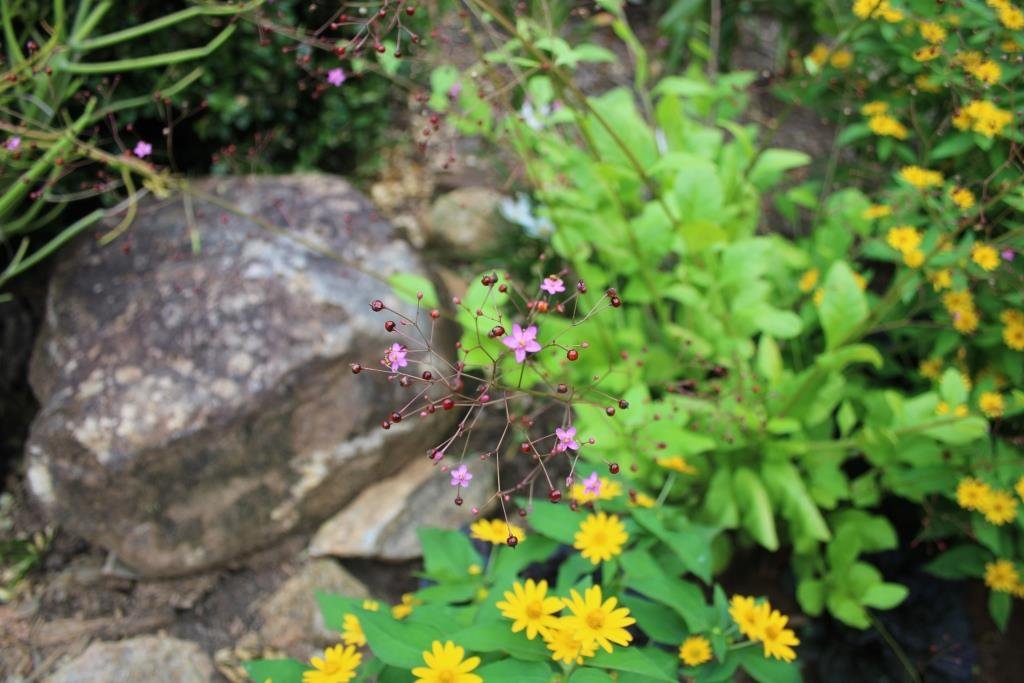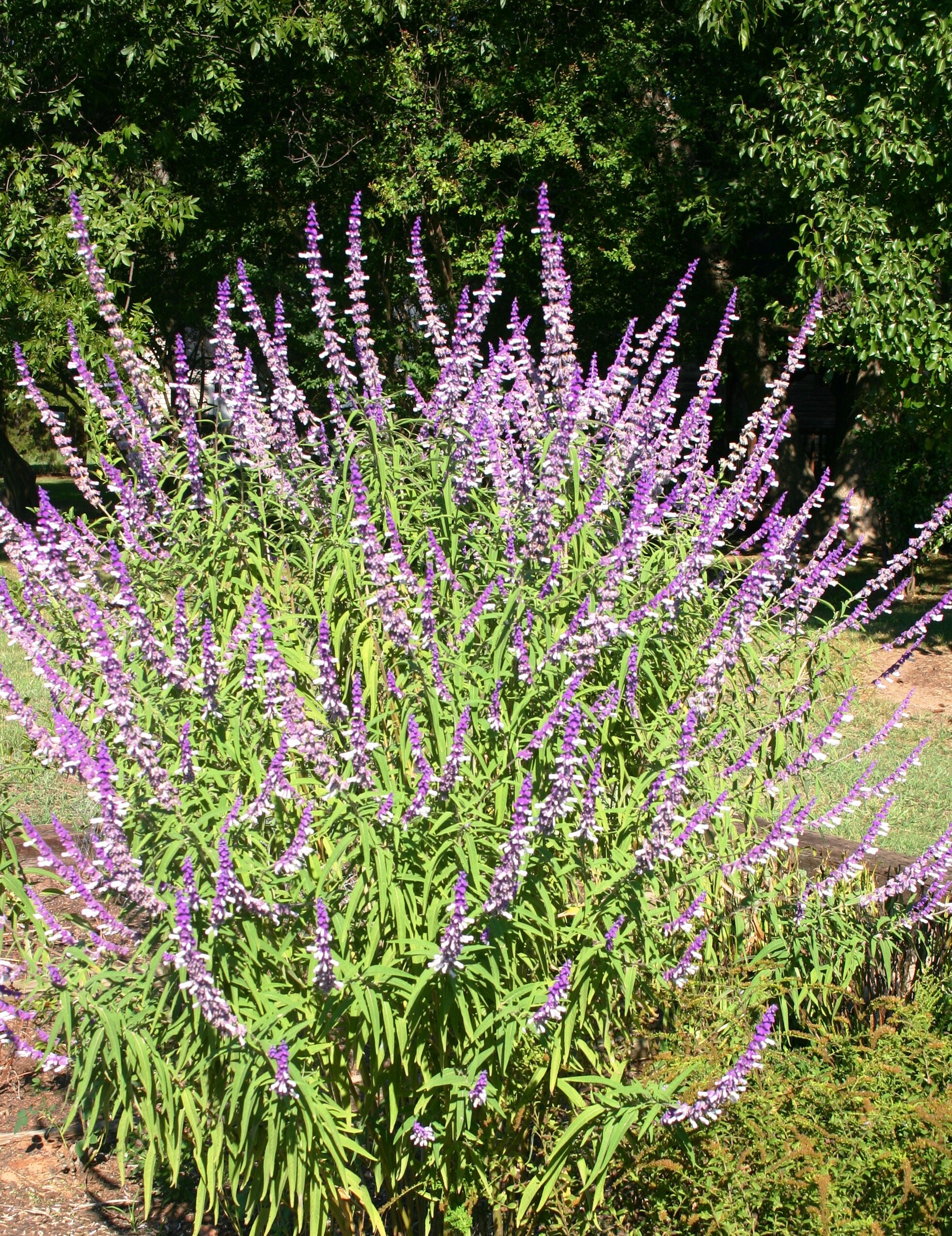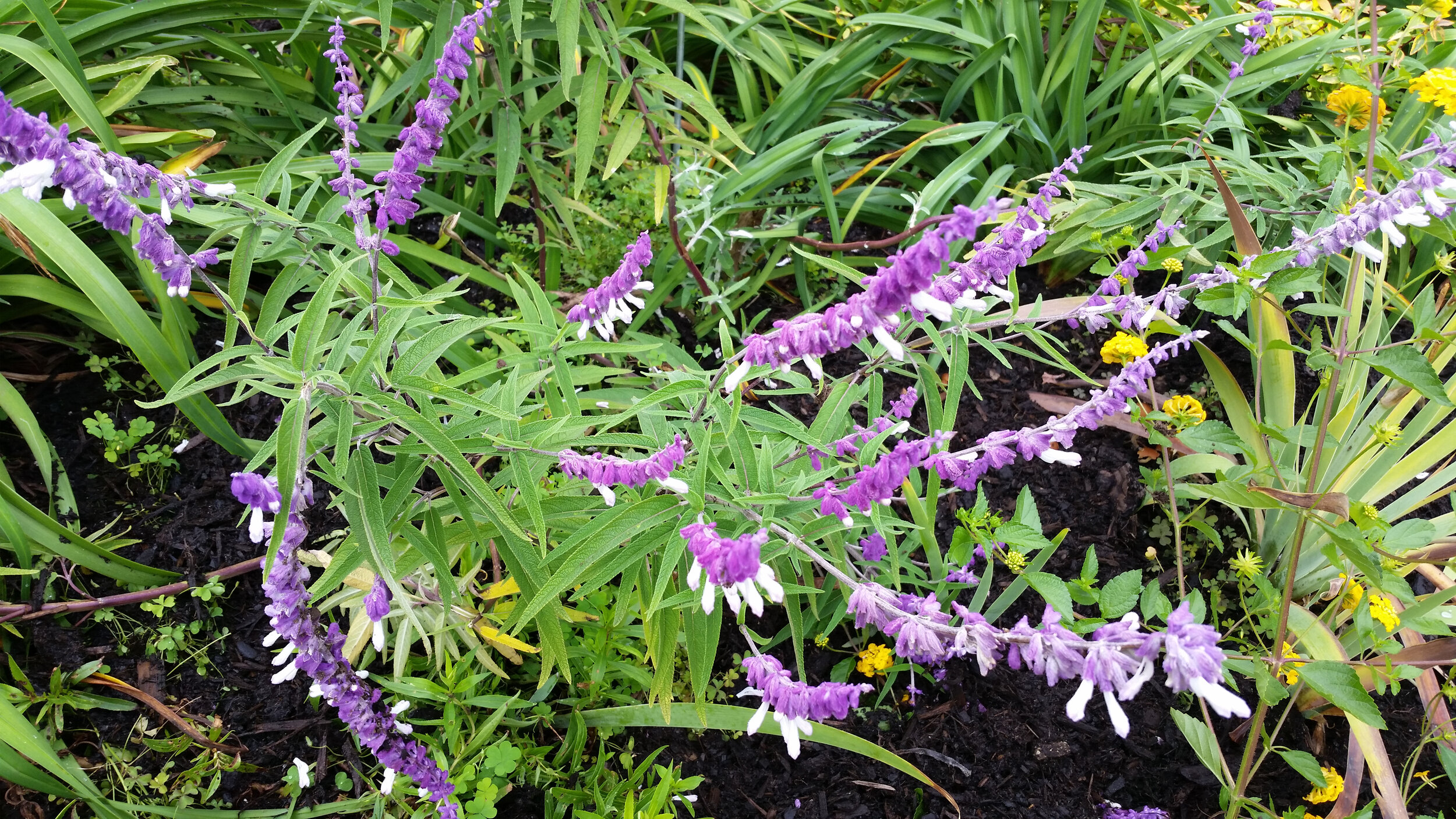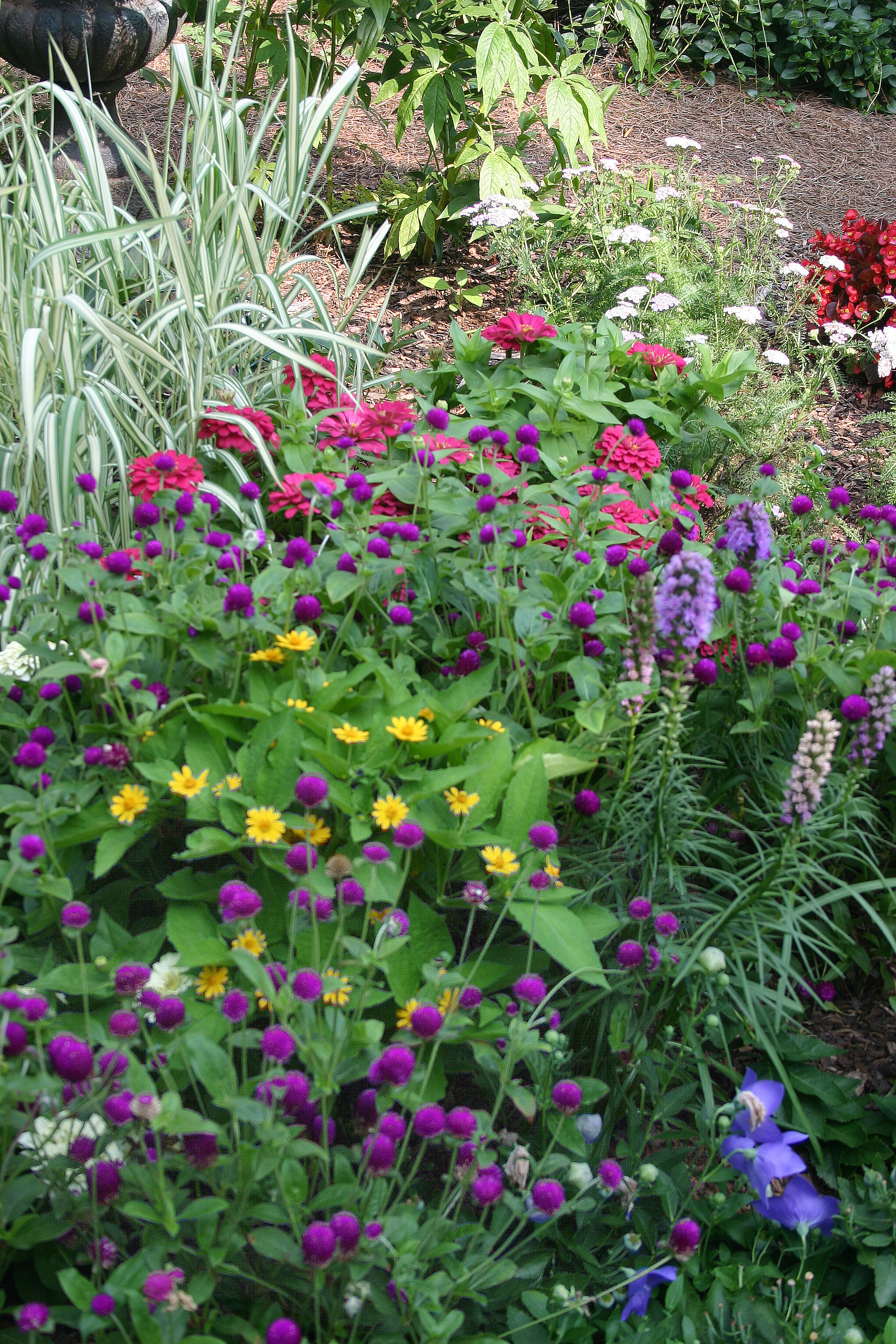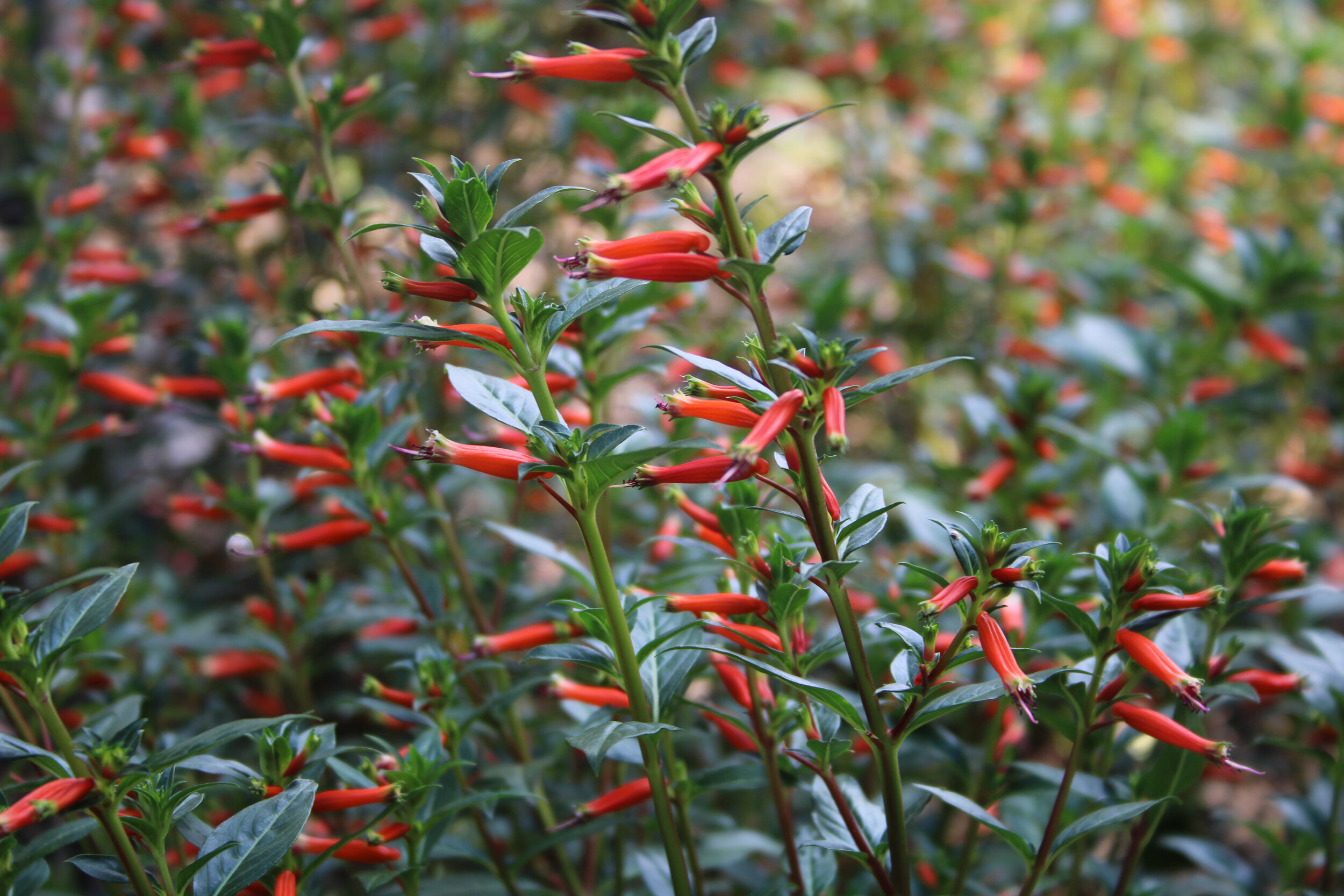I occasionally splurge and buy intriguing plants for which I have no intended location in my garden. Such is the case with El Niño® Desert Orchid, an intergeneric cross between Southern Catalpa (Catalpa bignonioides) and Desert Willow (Chilopsis linearis). Normally, I avoid horticultural Frankensteins because several years ago I blew the majority of my seasonal budget on Echibeckia, a breeding mashup between Echinacea and Rudbeckia. I had always succeeded with Coneflowers and Black Eyed Susans, so I thought this newcomer was a gardener’s dream. Alas, my plants all failed to thrive (translation: they died during their first season). Desert Orchid convinced me to take another risk.
The pink-to-purple flowers of the Desert Orchid make me think of a love child between snapdragon and orchid. The fuzzy throats add to the beauty. Fragrance is an added bonus. Plants are deciduous, hardy in zones 6-9, long-flowering, heat and drought tolerant, and deer resistant. The label indicated a mature size of 15-20 feet tall and 10 feet wide. I purchased three last fall, each in a 2-gallon container. I planted them in well drained soil and full sun, and hoped that they would survive. They lasted through their first winter and have already almost tripled in size. I am not certain that mine will show blooms during their first year but they should flower heavily next spring and then intermittently through the rest of the summer.
As I researched the Desert Orchid, I ran across an article in Fine Gardening Magazine – Issue 223 that explained that this intergeneric cross is nothing new. It was first accomplished in the 1960’s but the results were disappointing. Plants were often plagued by mildew. In the 2000’s, North Carolina State University Mountain Crop Improvement Lab resurrected the plant cross, with the intent of improving the end result. Much work and selection continued until 2023, when El Nino™ was declared the best. It was named Plant of the Month (September, 2024) by the University of California Agricultural and Natural Resources.
The growers say that El Nino will flower on new growth, so I plan to cut it back hard in winter and fertilize gently in the spring. This should result in plenty of new growth for the best flowering, and the cutback will keep the plant to shrub-size instead of tree-size.
The accompanying photographs are from the Proven Winners website, https://www.provenwinners.com/plants/chitalpa/el-ni-o-desert-orchid-chitalpa. The trademarked name is El Niño® Chitalpa 'NCXC1' USPP 35,880.






